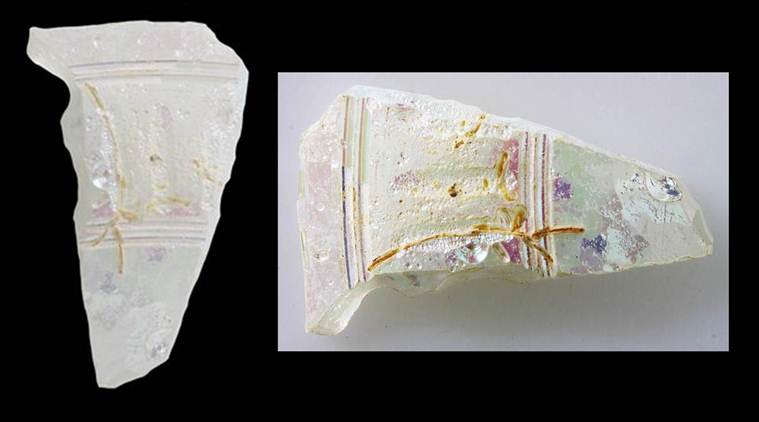 One of the colourless Roman glass sherds from Jerash, Jordan, analysed in this study. Purple splashes are iridescence due to weathering. Photo: Danish-German Jerash Northwest Quarter Project.
One of the colourless Roman glass sherds from Jerash, Jordan, analysed in this study. Purple splashes are iridescence due to weathering. Photo: Danish-German Jerash Northwest Quarter Project.
A team of researchers from Aarhus University in Denmark has traced the origins of ‘Alexandrian’ glass — a prized material used extensively during the Roman period — to Egypt. Based on the quantities of the rare element hafnium found within the glass, scientists were able to solve the long-standing mystery.
The Roman glass industry was known for producing a vast array of glass wares, ranging from vessels to mosaics. A majority of the glass was sourced from coastal Egypt and the Levant region in the Middle East. However, after a while demand began to grow for a colourless, transparent version, which later came to be known as ‘Alexandrian’ glass.
For decades, the origins of this clear rock crystal-like material divided scientists across the world. The Aarhus University team are the first to develop a technique to differentiate between clear glass manufactured in Egypt and the Levant during the time of the Roman Empire.
The scientists closely assessed 37 shards of ancient glass excavated from the city of Gerasa in Jordan. They measured the isotopes of hafnium in the glass, and matched it to the sand found along the river Nile in Egypt.
According to the researchers, sand from the Nile contained a certain amount of lime, which helped keep the glass stable and not degradable. Roman glassmakers added antimony to the material to make it “crystal clear”, geoscientist Gry Hoffmann Barfod, who led the study, told The New York Times.
The first mention of this glass was found on a price list issued by the Roman emperor Diocletian in the early fourth century A.D, where it is called ‘Alexandrian’. Its cost was double that of the common manganese-treated glass sourced from the Levant.
“We have the factories for the manganese-decolorized glass, but we don’t have them for the Alexandrian glass,” Dr. Barfod said. “It’s been a mystery that historians have dreamed of solving.”